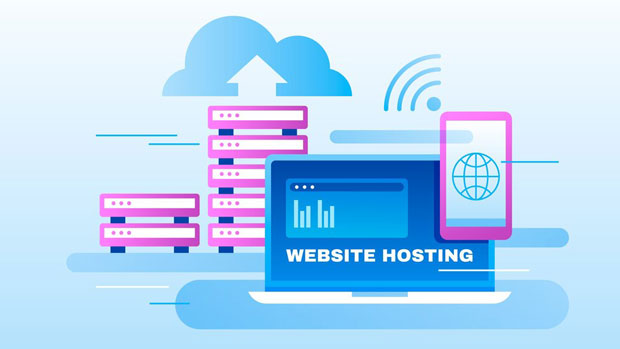In the ever-evolving world of social media, managing multiple accounts can be challenging. To help streamline the process, tools like proxies have become increasingly important. Among the available options are PYPROXY and Proxyium, two notable proxy services. Both provide essential support for social media account management by improving privacy, enhancing security, and allowing for seamless automation. Free web proxies, while offering a less costly solution, come with their own set of advantages and drawbacks. In this article, we will delve into how these proxy services perform in the context of managing social media accounts, evaluating their strengths, weaknesses, and impact on efficiency. Understanding Proxies and Their Importance in Social Media ManagementBefore we dive into the specifics of Pyproxy, Proxyium, and free web proxies, it's essential to understand what proxies do in the context of social media management. A proxy server acts as an intermediary between your device and the internet. By masking your real IP address, proxies help protect your identity, ensuring that your online activities remain anonymous. For social media managers, proxies provide a way to manage multiple accounts from different locations, access geo-restricted content, and avoid IP-based account bans or restrictions.In a world where social media algorithms are designed to detect unusual activities like rapid logins, high-frequency posting, or cross-account interactions, proxies allow users to appear as though they are operating from different regions or devices. This enhances the legitimacy of activities and helps users to avoid being flagged by platform security.Pyproxy vs Proxyium: A Detailed ComparisonNow let's compare Pyproxy and Proxyium in terms of their performance for social media account management. Both are reputable proxy services, but they come with different features and user experiences.Pyproxy: Strengths and WeaknessesPyproxy is known for its versatility and ease of use. One of its biggest advantages is its support for a wide variety of protocols, including HTTP, HTTPS, and SOCKS5. This makes it a good option for social media managers who need flexibility in how they connect to the internet.- Strengths: - Reliability: Pyproxy boasts high uptime and stable connections, which is crucial when managing multiple social media accounts. - Security: With robust encryption protocols, Pyproxy ensures that your online activities are safe from hackers or surveillance. - Customizable: Users can choose specific geographic locations for their proxy, which helps in targeting content in certain regions.- Weaknesses: - Cost: While Pyproxy offers some free plans, they may not be sufficient for high-demand users. The premium plans can be expensive, especially for small businesses or individual users. - Learning Curve: New users may find it slightly complex to set up and configure, especially if they’re not tech-savvy.Proxyium: Strengths and WeaknessesProxyium is another proxy provider that has gained popularity due to its streamlined interface and robust features. It is tailored for users who need to maintain a significant number of social media accounts without running into issues like IP bans or account restrictions.- Strengths: - Ease of Use: Proxyium is user-friendly, offering a simple setup process that doesn’t require extensive technical knowledge. This makes it an ideal choice for users who want a no-fuss solution for managing multiple accounts. - Speed: Proxyium offers fast connections with minimal lag, which is especially beneficial when managing time-sensitive social media tasks like posting or responding to messages. - Geo-targeting: Similar to Pyproxy, Proxyium allows users to select different server locations for optimal geographic targeting.- Weaknesses: - Limited Protocols: While Proxyium offers reliable service, it supports fewer protocols compared to Pyproxy. This can be a limitation for users who need specialized connections or configurations. - Performance Fluctuations: Some users have reported occasional performance dips, particularly during peak usage times. This may not be ideal for high-volume social media managers who require consistent performance.The Role of Free Web Proxies in Social Media ManagementFree web proxies are often viewed as an entry-level solution for social media account management. They offer an affordable way to manage accounts, but they come with significant limitations compared to paid services like Pyproxy and Proxyium.- Advantages of Free Web Proxies: - Cost-Effective: The primary benefit of free web proxies is their zero-cost entry point, which can be appealing for individuals or small businesses just starting with social media management. - Anonymous Browsing: Like paid proxies, free web proxies allow users to hide their real IP address, providing anonymity during online activities. - Easy Setup: Many free proxies offer easy setup processes that don’t require advanced technical knowledge.- Disadvantages of Free Web Proxies: - Limited Speed and Reliability: Free proxies often suffer from slow speeds and frequent downtime, which can hinder social media management efforts. High latency can cause delays in posting, loading content, or managing messages. - Security Risks: Free proxies typically lack the strong security features offered by premium services. They may expose users to potential data breaches or cyberattacks. - Limited Locations and Customization: Free web proxies may only offer a small number of server locations, limiting the ability to geo-target content effectively. Additionally, customization options are often restricted.Impact on Efficiency and Automation in Social Media ManagementEfficient social media management relies on automation and optimization. Both Pyproxy and Proxyium offer features that help streamline social media tasks, such as managing posts, responding to messages, or handling multiple accounts simultaneously.- Pyproxy and Proxyium for Automation: Both services support automation tools, allowing users to schedule posts, automatically engage with content, or manage interactions with followers. By masking IP addresses, these proxies ensure that such activities appear legitimate and reduce the risk of being flagged by social media algorithms.- Free Web Proxies and Automation: While free web proxies can be used for automation, their lack of reliability and security can undermine the effectiveness of such tasks. For instance, slow connections or downtime may interrupt scheduled posts or interactions, affecting the overall performance of social media campaigns.Conclusion: Choosing the Right Proxy for Social Media Account ManagementWhen it comes to managing social media accounts, choosing the right proxy service is crucial for ensuring privacy, security, and efficiency. Pyproxy and Proxyium both offer robust solutions with varying strengths and weaknesses, while free web proxies provide an affordable but less reliable alternative.- For individuals or small businesses who prioritize ease of use and fast connections, Proxyium may be the better option.- For users who require greater customization and protocol flexibility, Pyproxy could be the more suitable choice.- Free web proxies, while cost-effective, are best suited for low-volume tasks or testing, but they may not provide the reliability and performance needed for large-scale social media management.
Sep 02, 2025



































































